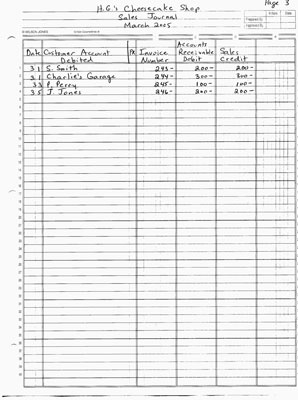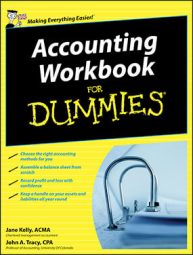The Sales journal is where you initially record transactions for sales made by store credit (non-cash transactions). Each entry in the Sales journal must indicate the customer’s name, the invoice number, and the amount charged.
Not all sales involve the collection of cash; many stores allow customers to buy products on store credit using a store credit card. However, when a customer uses a bank-issued credit card, the bank, not the store or company making the sale, is who has to worry about collecting from the customer.
Store credit comes into play when a customer is allowed to take a store’s products without paying immediately because he has an account that’s billed monthly. This can be done by using a credit card issued by the store or some other method the company uses to track credit purchases by customers, such as having the customer sign a sales receipt indicating that the amount should be charged to the customer’s account.
Sales made on store credit don’t involve cash until the customer pays his bill. (In contrast, with credit card sales, the store gets a cash payment from the card-issuing bank before the customer even pays the credit card bill.) If your company sells on store credit, the total value of the products bought on any particular day becomes an item for the Accounts Receivable account, which tracks all money due from customers.
Before allowing customers to buy on credit, your company should require customers to apply for credit in advance so that you can check their credit references.
When something’s sold on store credit, usually the cashier drafts an invoice for the customer to sign when picking up the product. The invoice lists the items purchased and the total amount due. After getting the customer’s signature, the invoice is tracked in both the Accounts Payable account and the customer’s individual account.
In the Sales journal, the Accounts Receivable account is debited, which increases in value. The bookkeeper must also remember to make an entry to the customer’s account records because the customer has not yet paid for the item and will have to be billed for it. The transaction also increases the value of the Sales account, which is credited.
The following example shows a few days’ worth of transactions related to store credit.

The Sales journal in the figure has six columns of information:
Date: The date of the transaction.
Customer Account Debited: The name of the customer whose account should be debited.
PR (post reference): Where the transaction will be posted at the end of the month. This information is filled in at the end of the month when you do the posting to the General Ledger accounts. If the entry to be posted to the accounts is summarized and totaled at the bottom of the page, you can just put a check mark next to the entry in the PR column.
For transactions listed in the General Credit or General Debit columns, you should indicate an account number for the account into which the transaction is posted.
Invoice Number: The invoice number for the purchase.
Accounts Receivable Debit: Increases to the Accounts Receivable account.
Sales Credit: Increases to the Sales account.
At the end of the month, the bookkeeper can just total the Accounts Receivable and Sales columns shown in the figure and post the totals to those General Ledger accounts. She doesn’t need to post all the detail because she can always refer back to the Sales journal. However, each invoice noted in the Sales journal must be carefully recorded in each customer’s account. Otherwise, the bookkeeper doesn’t know who and how much to bill.

